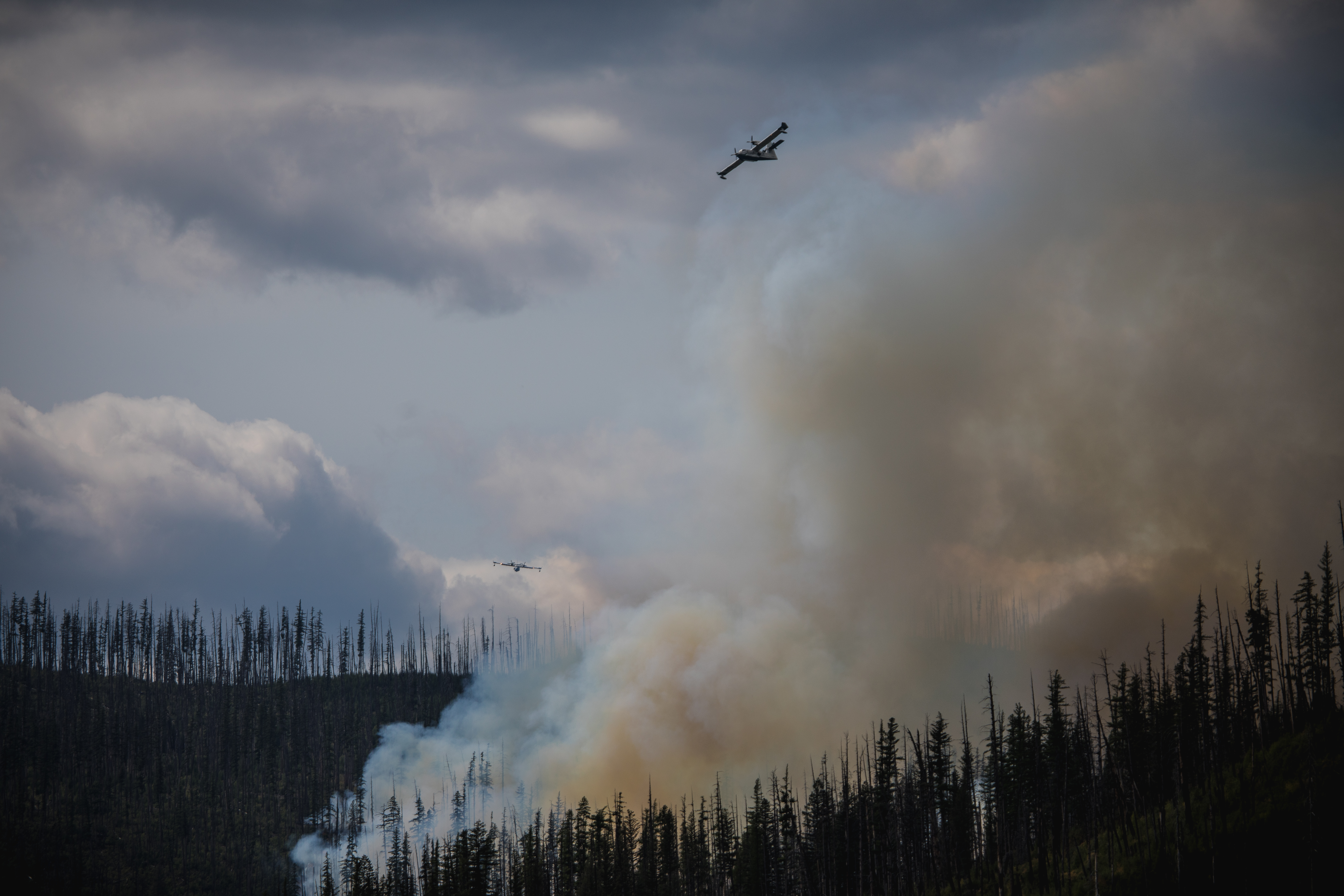News Release

NPS Photo
News Release Date: August 1, 2019
Contact: Vanessa Lacayo, (303) 969-2062
Lakewood, CO – Today, the National Park Service (NPS) released a video documenting the first 36 hours of the Howe Ridge Fire, which took place at Glacier National Park. The fire destroyed private homes and publicly-owned historic structures on August 12, 2018.
The video documents steps firefighters took to attack the wildland fire initially, and the combination of factors that made initial attack unsuccessful. The video also documents evacuation and structural firefighting efforts.
The goal of the video is to share these efforts and raise awareness about this incident to other public land management agencies, people who visit and recreate on public lands, and residents who live in wildland fire prone areas.
Summary of Events
August 11, 2018, was a Red Flag day when a weather system moved through the region bringing little moisture and widespread lightning, 19 fires ignited across the Northern Rockies Fire Zone. Three of these fires ignited in Glacier National Park, requiring interagency fire managers to prioritize by considering values at risk. The Howe Ridge Fire was detected at 7:18 pm - all three park fires were deemed high priority fires. Firefighters caught the other two fires on initial attack due to a combination of factors, including access and weather conditions.
In the last 10 years, there were three other reported fires on Howe Ridge. Because the area is relatively close to developed infrastructure, all three fires were managed with full suppression tactics. One was suppressed at .1 acres, another at 2.3 acres, and the third was never found after the initial report. We presume that fire went out without firefighter intervention. In all cases, these previous fires were relatively straightforward to control.
Once the NPS detected the Howe Ridge Fire on August 11, they immediately attempted to access the area and prevent the fire from spreading. Unfortunately, given the time of day and location of the fire, crews were unable to access the area immediately on foot or via a helicopter. The park placed an order for a Type 1 helicopter for the next morning and developed an action plan. The park successfully secured two CL-215s (super scoopers) due to the high priority nature of the fire within the northern Rockies fire zone, and 14 firefighters attempted to access the fire by ground.
The two CL-215s arrived the morning of August 12, and worked four hours (one fuel cycle), dropping tens of thousands of gallons of water on the fire. High winds made it impossible for them to fly close enough to the fire to be effective. The CL-215s then went to other priority fires outside the park.
Firefighters again tried to hike to the fire, but were not able to engage directly because of fire behavior.
By that afternoon, the fire had burned approximately 20 acres, escaping initial response.
Early that evening, the fire grew rapidly and exhibited extreme behavior, including tree torching, crown runs, wind-driven fire, and fire spots up to ½ mile away. The behavior prompted emergency evacuations on the night of August 12. Between 7 p.m. and 10 p.m, approximately 1,000 visitors, employees, and local residents were evacuated from campsites, North McDonald Road (private residences and the Lake McDonald Ranger Station), Lake McDonald Lodge Complex, and private residences along the Going-to-the-Sun Road. Interagency emergency services and wildland and structural firefighting units responded from across Flathead Valley.
The fire grew from 20 acres to an estimated 2,500 acres overnight, spreading down the lakeshore at Kelly’s Camp, the historic Wheeler Residence, and the Lake McDonald Ranger Station.
In total, the fire grew to more than 14,000 acres and firefighting efforts cost $13.6 million. The fire continued to raise smoke until significant snow fell in winter 2018. Owing to firefighting efforts, previous fuel reduction, and containment strategies, the main historic Wheeler cabin residence and Lake McDonald Ranger Station were saved, and firefighters prevented it from reaching Going-to-the-Sun Road and private residences along Grist Road and Apgar.
“August 12 was one of the most challenging and heartbreaking nights in Glacier’s history,” said Glacier National Park Superintendent Jeff Mow. “Words cannot do justice the thanks we give to our local county, state, and federal firefighting partners who arrived the night of August 12 in our time of great need.”
“While 2018 fire recovery efforts are well underway for both the park and private homeowners, we can’t lose sight of future fire seasons. These events and others we have seen throughout the West show us that we must continue fuels mitigation efforts, strengthen our wildland fire response capabilities, and as residents and visitors in this forested region, enhance our own personal firewise and evacuation strategies,” Mow continued.
The 27-minute video documenting the first 36 hours of the Howe Ridge Fire can be found on the Wildland Fire Lessons Learned Center website. Photos and videos of the Howe Ridge Fire are located on the park’s Flickr site.
Last updated: August 1, 2019
